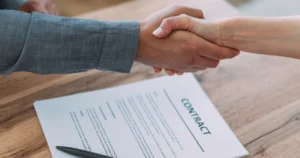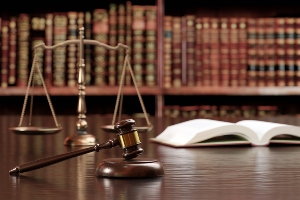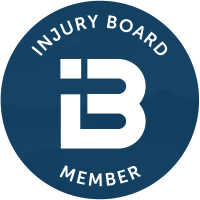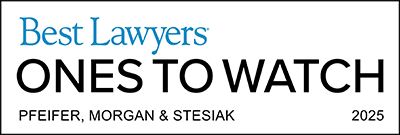 If you have been injured in an accident caused by another’s carelessness, it may be in your best interest to pursue a personal injury case to obtain compensation for your injuries. Below are answers to some important questions you may have about pursuing a personal injury lawsuit.
If you have been injured in an accident caused by another’s carelessness, it may be in your best interest to pursue a personal injury case to obtain compensation for your injuries. Below are answers to some important questions you may have about pursuing a personal injury lawsuit.
A South Bend personal injury lawyer at the law offices of Pfeifer, Morgan & Stesiak can review your case and explain the process in detail, so contact our caring team today for a free case evaluation.
Call (574) 444-0741 to schedule a free consultation with a lawyer.
What Is the Purpose of a Personal Injury Case?
A personal injury case seeks justice and fair compensation for a victim who has been injured because of another’s negligence. While financial compensation cannot erase the pain, monetary damages are intended to help compensate the victim for what he or she sustained and to return the victim to a position similar to where he or she was before the injury.
A personal injury case may be pursued to help compensate for injuries sustained from:
- Auto accidents
- Pedestrian accidents
- Slip-and-fall accidents
- Defective products
Who Is Involved in a Personal Injury Case?
Each personal injury case is different, so different individuals and entities may be involved. However, the various roles involved in a personal injury case include the following:
- Claimant/plaintiff/victim – The claimant is the individual who was injured in the accident and who is making a claim against the defendant.
- Defendant/tortfeasor – The defendant is the party who is accused of wrongdoing and causing the victim’s injuries. This is the at-fault party.
- Insurance adjuster – Many lawsuits begin with an insurance claim. The insurance company’s representative during the claims process is called an adjuster, and he or she is usually given a certain amount of latitude to settle the claim.
- First-party insurance – This is the claimant’s own insurance.
- Third-party insurance – This is the at-fault party’s insurance.
- Attorneys – The claimant and the defendant may have attorneys fighting for their clients’ best interest in the case.
What Is the Role of My Lawyer?
Personal injury cases are often very complex. If you have been injured in an accident, our lawyers can:
- Conduct a thorough investigation into your accident
- Identify all parties that were involved
- Build your case based on evidence that highlights the at-fault party’s negligence
- Negotiate with insurance companies to pursue the maximum compensation available for you
You can trust your personal injury lawyer to handle all of the details for you so you can focus on your recovery. He or she can advise you of your rights and explain the various aspects of your case, such as:
- Statutes of limitations – Your lawyer can explain how long you have to file a lawsuit against the at-fault party before the statute of limitations deadline.
- Notice requirements – If your case is against the government, you may have to provide notice in a specific legal manner.
- Settlement value – Your attorney can analyze the circumstances surrounding your claim and determine the fair value of it.
What Are the Steps in a Personal Injury Case?
If you decide to pursue a personal injury case against the at-fault party, the process includes some or all of the following steps:
1. Initial Consultation
A consultation with an experienced lawyer allows you to discuss your case in a confidential environment and learn about your rights. During the consultation, you will discuss the nature of your accident, the extent of your injuries and the ways the accident has affected your life.
A lawyer can explain what legal options are available to you and what types of compensation you may be entitled to receive. At Pfeifer, Morgan & Stesiak, the consultation is free.
2. Filing a Complaint
If you have a case, the next step is to file a complaint. This document begins the lawsuit process. It states your grounds for recovering compensation, gives a basic summary of the situation and identifies the damages you are seeking. The defendant is required to file an answer to this complaint to avoid a default judgment in your favor.
3. Discovery Process
The discovery process consists of exchanging evidence based on specific questions that are asked or requests that are made. Your lawyer may talk to an accident reconstruction expert, medical expert or other expert to help establish important information about your claim.
4. Settlement Negotiations
Before a trial, the attorneys for each side usually attempt to reach a settlement. If the parties agree to the settlement terms, the defendant agrees to pay a certain amount and the plaintiff agrees to release the defendant from further liability. Most cases are settled prior to trial.
5. Trial
If the parties do not reach a settlement, they proceed to trial. During a trial, parties and witnesses may be called to the stand as the attorneys examine and cross-examine them. Evidence is presented. After the trial, the judge or jury makes a decision.
If the case is ruled in favor of the plaintiff, he or she should receive a set amount of compensation from the defendant. If the case is ruled in favor of the defendant, the plaintiff will not receive anything.
Contact a Lawyer for Help with Your Case
If you or a loved one was injured by another person’s negligence, it is important to contact an experienced personal injury lawyer for assistance. We can explain the lawsuit process during a free, no-obligation consultation. You only pay attorneys’ fees if we help you obtain compensation.
Call (574) 444-0741
to schedule a free consultation.













